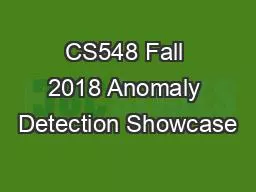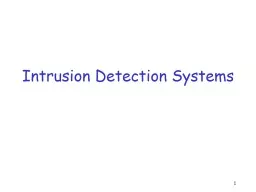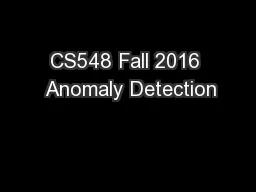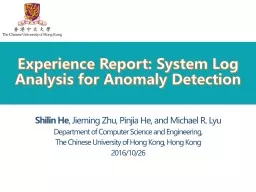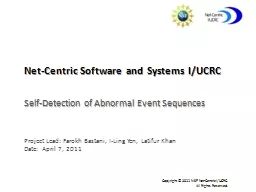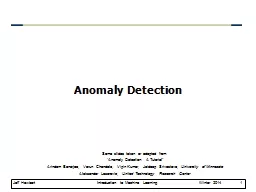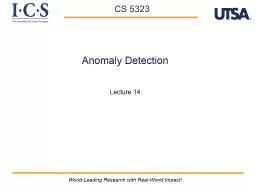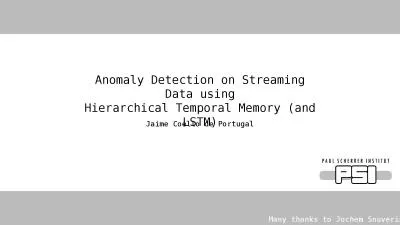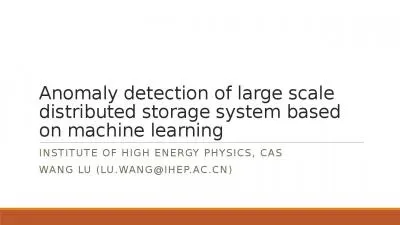PPT-CS548 Fall 2018 Anomaly Detection Showcase
Author : sistertive | Published Date : 2020-08-26
Showcase by Abhishek Shah Mahdi Alouane Marie Solman Satishraju Rajendran and EnoObong Inyang Showcasing work by Cai Lile Li Yiqun On ANOMALY DETECTION IN THERMAL
Presentation Embed Code
Download Presentation
Download Presentation The PPT/PDF document "CS548 Fall 2018 Anomaly Detection Showca..." is the property of its rightful owner. Permission is granted to download and print the materials on this website for personal, non-commercial use only, and to display it on your personal computer provided you do not modify the materials and that you retain all copyright notices contained in the materials. By downloading content from our website, you accept the terms of this agreement.
CS548 Fall 2018 Anomaly Detection Showcase: Transcript
Download Rules Of Document
"CS548 Fall 2018 Anomaly Detection Showcase"The content belongs to its owner. You may download and print it for personal use, without modification, and keep all copyright notices. By downloading, you agree to these terms.
Related Documents

